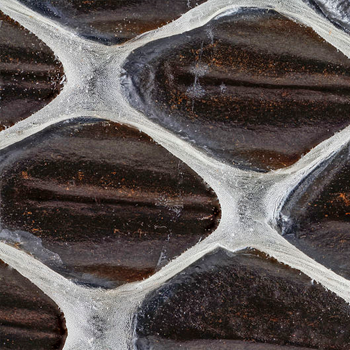Question #36bf7
3 Answers
number of terms
Explanation:
Recall that a geometric sequence can be written in the following form:
#color(blue)(|bar(ul(color(white)(a/a)t_n=ar^(n-1)color(white)(a/a)|)))#
where:
Question 1 i)
#r=t_2/t_1#
#r=6/2#
#r=3#
#t_n=ar^(n-1)#
#color(green)(|bar(ul(color(white)(a/a)t_n=2(3)^(n-1)color(white)(a/a)|)))#
Question 1 ii)
#t_n=2(3)^(n-1)#
#1458=2(3)^(n-1)#
#729=3^(n-1)#
#3^6=3^(n-1)#
#6=n-1#
#color(green)(|bar(ul(color(white)(a/a)n=7color(white)(a/a)|)))#
Explanation:
Question 2
#t_n=ar^(n-1)color(white)(XXXXXXXXx)t_n=ar^(n-1)#
#8=ar^(2-1)color(white)(XXXXXXXXX)64=ar^(5-1)#
#8=arcolor(white)(XXXXXXXXXXX)64=ar^4#
#(64=ar^4)/(8=ar)#
#(64=color(red)cancelcolor(black)ar^4)/(8=color(red)cancelcolor(black)ar)#
#8=r^3#
#r=root(3)(8)#
#color(green)(|bar(ul(color(white)(a/a)r=2color(white)(a/a)|)))#
#8=ar#
#8=a(2)#
#color(green)(|bar(ul(color(white)(a/a)a=4color(white)(a/a)|)))#
Explanation:
Question 3
Equation
#1# :#color(orange)a+color(purple)(ar^2)=20/3# Equation
#2# :#color(brown)(ar)+color(blue)(ar^3)=20/9#
Equation
#1# :#color(white)(XXXXXXXXX)# Equation#2# :
#color(orange)a+color(purple)(ar^2)=20/3color(white)(XXXXXXX)color(brown)(ar)+color(blue)(ar^3)=20/9#
#a(1+r^2)=20/3color(white)(XXXXXX)a(r+r^3)=20/9#
#a=20/(3(1+r^2))color(white)(XXXXXXX)a=20/(9(r+r^3))#
#20/(color(turquoise)3(1+r^2))=20/(color(teal)9(r+r^3))#
#(color(turquoise)3*color(teal)9)[20/(color(turquoise)3(1+r^2))]=(color(turquoise)3*color(teal)9)[20/(color(teal)9(r+r^3))]#
#(color(red)cancelcolor(turquoise)3*color(teal)9)[20/(color(red)cancelcolor(turquoise)3(1+r^2))]=(color(turquoise)3*color(red)cancelcolor(teal)9)[20/(color(red)cancelcolor(teal)9(r+r^3))]#
#(9(20))/(1+r^2)=(3(20))/(r+r^3)#
#180/color(magenta)(1+r^2)=(60)/(rcolor(magenta)((1+r^2)))#
#color(magenta)((1+r^2))(180/color(magenta)(1+r^2))=color(magenta)((1+r^2))[(60)/(rcolor(magenta)((1+r^2)))]#
#color(red)cancelcolor(magenta)((1+r^2))(180/color(red)cancelcolor(magenta)(1+r^2))=color(red)cancelcolor(magenta)((1+r^2))[(60)/(rcolor(red)cancelcolor(magenta)((1+r^2)))]#
#180=60/r#
#180r=60#
#color(green)(|bar(ul(color(white)(a/a)r=1/3color(white)(a/a)|)))#
#a=20/(3(1+r^2))#
#a=20/(3(1+(1/3)^2)#
#a=20/(3(1+1/9))#
#a=20/(3((9+1)/9))#
#a=20/(color(red)cancelcolor(black)3^1((10)/color(red)cancelcolor(black)9^3))#
#a=20/(10/3)#
#a=20*3/10#
#a=color(red)cancelcolor(black)20^2*3/color(red)cancelcolor(black)10^1#
#color(green)(|bar(ul(color(white)(a/a)a=6color(white)(a/a)|)))#

